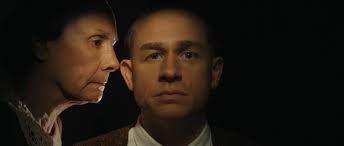Ed Gein
Edward Theodore Gein (August 27, 1906 – July 26, 1984) was an American murderer and grave robber from Plainfield, Wisconsin. His crimes, discovered in 1957, gained worldwide notoriety for their grotesque nature and the psychological profile that inspired numerous horror films and fictional characters. Although often labeled a “monster” in popular culture, Gein was a real individual whose life and actions have been the subject of extensive criminological and cultural analysis.

Early Life
Edward Theodore Gein was born in La Crosse County, Wisconsin, to George and Augusta Gein. His childhood was marked by isolation, strict religious indoctrination, and a domineering mother who instilled in him a belief that women (apart from herself) were sinful and corrupt. The family lived on a remote farm in Plainfield, where Ed and his brother Henry were largely cut off from the outside world.
- Father: George Gein, an alcoholic and inconsistent provider.
- Mother: Augusta Wilhelmine Gein, a deeply religious and controlling figure.
- Education: Attended a small rural school; classmates and teachers described him as shy and socially awkward but with decent academic ability.
After his father’s death in 1940 and his brother Henry’s mysterious death in 1944 (possibly accidental but still debated), Ed Gein lived alone with his mother until her death in 1945. Her passing profoundly affected him, leading to reclusive and increasingly disturbed behavior.
Crimes and Investigation
Grave Robbing
Between 1947 and 1957, Gein began exhuming corpses from local cemeteries. He selected graves of middle-aged women resembling his mother and used body parts for macabre “trophies” and household decorations. Investigators later found furniture, bowls, masks, and clothing made from human skin and bones.
Murders
Gein was officially linked to two murders:
- Mary Hogan (1954) – A tavern owner who disappeared from her establishment in Pine Grove, Wisconsin.
- Bernice Worden (1957) – A hardware store owner whose disappearance led directly to Gein’s arrest.
Police discovered Worden’s decapitated body hanging in Gein’s shed, along with numerous human remains in his farmhouse. The evidence pointed to both murder and extensive grave robbery.
Arrest and Trial
Ed Gein was arrested on November 16, 1957. During interrogation, he confessed to grave robbing and the murders, though his recollections were fragmented and inconsistent. He was found legally insane and unfit to stand trial. Gein was committed to Central State Hospital for the Criminally Insane (now Dodge Correctional Institution) and later transferred to Mendota Mental Health Institute, where he remained until his death.
In 1968, after being deemed competent, Gein was tried for the murder of Bernice Worden. The court found him guilty but insane, and he was recommitted for life.
Psychological Profile
Psychiatrists diagnosed Gein with schizophrenia and psychopathic tendencies, marked by extreme attachment to his mother, necrophilia, and gender dysphoria-like behaviors. His fixation on creating a “woman suit” from human skin has been interpreted as an attempt to “become” his mother symbolically.
Cultural Influence
Ed Gein’s crimes inspired several major works in horror fiction:
- Norman Bates in Psycho (1960, based on Robert Bloch’s novel)
- Leatherface in The Texas Chain Saw Massacre (1974)
- Buffalo Bill in The Silence of the Lambs (1991)
His case helped shape the modern archetype of the “rural American monster” and remains one of the most infamous examples of true crime influencing pop culture.
Legacy and Public Perception
Gein’s name became synonymous with macabre fascination, blending myth and fact. While often called a “monster” in media coverage, criminologists emphasize understanding him as a severely disturbed individual shaped by isolation, trauma, and mental illness rather than inherent evil.
His Plainfield farmhouse was destroyed by fire in 1958, and the site remains a morbid attraction for true-crime enthusiasts. Gein died of respiratory and heart failure due to cancer on July 26, 1984, at the age of 77.
Criticism and Ethical Debate
- Media sensationalism: Critics argue that extensive coverage and fictionalization blurred the line between factual crime reporting and exploitation.
- Cultural mythologizing: Gein’s transformation into a horror legend raises ethical questions about turning real tragedies into entertainment.
- Psychiatric interpretation: Some scholars view his case as a cautionary tale about untreated mental illness and rural isolation.
See Also
- Psycho (film)
- The Texas Chain Saw Massacre
- The Silence of the Lambs
- List of serial killers in the United States
- True crime and media ethics
References
- Schechter, Harold. Deviant: The Shocking True Story of Ed Gein, the Original “Psycho.” Pocket Books, 1989.
- Bell, Michael. Lament for a Dead Monster: Ed Gein and the Cultural Imaginary. Wisconsin Historical Review, 2007.
- Ressler, Robert & Shachtman, Tom. Whoever Fights Monsters. St. Martin’s Press, 1992.
- Wisconsin State Archives. “State v. Edward T. Gein Trial Transcripts.” 1968.

